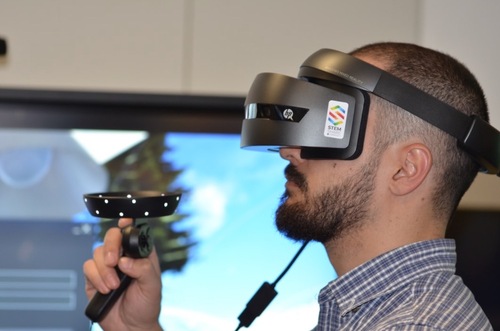Treating Fear Of Flying Through Virtual Reality Therapy
By Lisa Schiro MS LCPC

The fear of flying, known as aviophobia, affects a significant portion of the population, limiting individuals in their personal and professional lives. Virtual Reality Therapy (VRT) has emerged as a promising intervention to address this phobia by providing both a controlled & immersive environment for individuals to confront and overcome their fear of flying.
Understanding the Fear of Flying
Aviophobia often stems from a combination of factors, including fear of heights, lack of control, and anxiety about potential disasters. Traditional treatments for this phobia have included cognitive-behavioral therapy and exposure therapy. However, the controlled and realistic nature of Virtual Reality Therapy offers a unique advantage in simulating the flying experience while maintaining a safe and supportive environment.
Components of VRT for Aviophobia:
VRT for the fear of flying involves creating virtual environments that mimic the experience of being on an airplane, from the check-in process to takeoff, cruising, and landing. These environments can be tailored by your therapist to address specific triggers for each individual, such as turbulence or crowded cabins. Therapists guide patients through these scenarios, allowing them to gradually confront and acclimate to the stimuli that trigger their fear.
In traditional treatment protocol for phobias, the client is asked to bring up the image of the thing he fears the most, which is preposterous on the face of it. Who would want to do that?
Immersive Exposure
The core principle of VRT for aviophobia is immersive exposure This enables individuals to face their fears in a gradual and systematic manner, with the ability to repeat sessions and increase complexity as they progress. Exposure in virtual environments aims to desensitize individuals to anxiety-inducing stimuli, promoting a more adaptive response.
VRT Can Also Be Used To Treat Various Other Phobias, Like Fear Of Heights, Fear Of Driving, Fear Of Enclosed Spaces, Fear Of Spiders, Fear Of Snakes, Etc.
Cognitive-Behavioral Integration
Integrating cognitive-behavioral therapy principles is essential in addressing the cognitive aspects of the fear of flying. VRT allows therapists to manipulate the environment, manage the usual triggers and guide individuals through cognitive restructuring exercises within the virtual environment. This includes identifying and challenging irrational thoughts related to flying, such as catastrophic thinking or overestimating the potential of a plane crash. The combination of immersive exposure and cognitive restructuring enhances the overall effectiveness of the intervention. The other added benefit is that it is often much faster to treat aviophobia using VRT, which can save money and time in the long run.
Gone are the days of recommending that our aviophobic clients breathe through a straw and practice relaxation techniques during a time they are typically terrified and nearly always without their therapist next to them.
Scientific Evidence for VRT in Aviophobia
Numerous studies have explored the efficacy of VRT in treating the fear of flying, consistently reporting positive outcomes. Patients undergoing VRT have demonstrated significant reductions in anxiety levels, avoidance behaviors, and overall fear of flying. The immersive nature of virtual environments that can be controlled by the therapist contributes to the success of the intervention by eliciting authentic emotional and physiological responses comparable to real-world experiences.
Benefits and Future Directions:
The use of VRT for the fear of flying offers several advantages, including increased accessibility (telehealth), personalized treatment, and the ability to modify scenarios to individual needs. As technology continues to advance, future directions for VRT in aviophobia may include the development of even more realistic virtual environments, enhanced user interfaces, trigger management, and increased affordability, making this innovative treatment approach even more widely available.
VRT has a wide application of interventions with anxiety disorders.
Conclusion:
In conclusion, VRT represents an effective & holistic approach to treating the fear of flying, providing individuals with a safe and controlled environment to confront and overcome their phobia. The combination of immersive exposure and cognitive-behavioral integration positions VRT as a powerful and innovative intervention for addressing the complex nature of aviophobia. As research and technological advancements in virtual reality continue, the potential for VRT to revolutionize the treatment landscape for the fear of flying, as well as other phobias, becomes increasingly evident, offering hope to those seeking relief from this debilitating phobia.
~Lisa Schiro MS LCPC
Founder & CEO
K-Counseling & Anxiety Treatment
k-counseling.org







